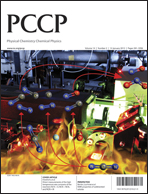One challenge in computational biophysics and biology is to develop methodologies able to estimate accurately the configurational entropy of macromolecules. Among many methods, the quasiharmonic approximation (QH) is most widely used as it is simple in both theory and implementation. However, it has been shown that this method becomes inaccurate by overestimating entropy for systems with rugged free energy landscapes. Here, we propose a simple method to improve the QH approximation, i.e., to reduce QH entropy. We approximate the potential energy landscape of the system by an effective harmonic potential, and request that this potential must produce exactly the configurational temperature of the system. Due to this constraint, the force constants associated with the effective harmonic potential are increased, or equivalently, entropy of motion governed by this effective harmonic potential is reduced. We also introduce the effective configurational temperature concept which can be used as an indicator to check the anharmonicity of the free energy landscape. To validate the new method we compare it with the recently developed expansion approximate method by calculating entropy of one simple model system and two peptides with 3 and 16 amino acids either in gas phase or in explicit solvent. We show that the new method appears to be a good choice in practice as it is a compromise between accuracy and computational speed. A modification of the expansion approximate method is also introduced and advantages are discussed in some detail.

You have access to this article
 Please wait while we load your content...
Something went wrong. Try again?
Please wait while we load your content...
Something went wrong. Try again?


 Please wait while we load your content...
Please wait while we load your content...